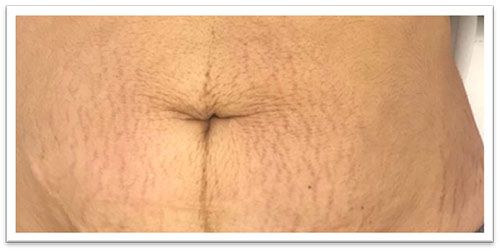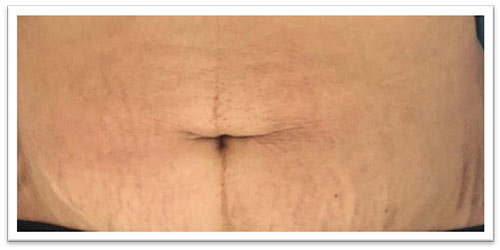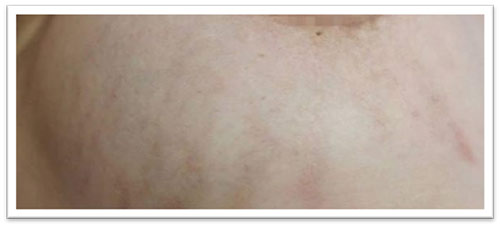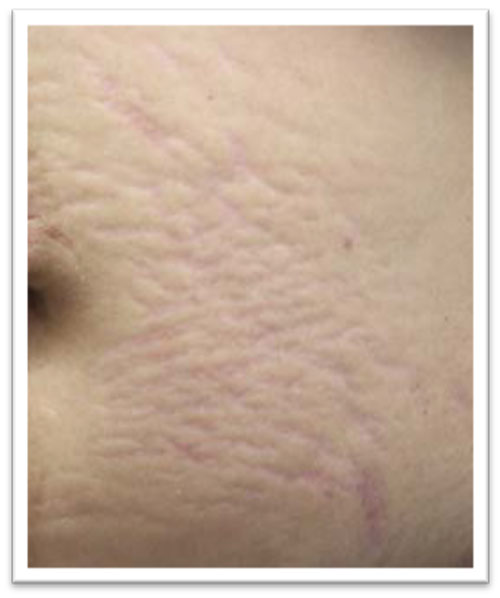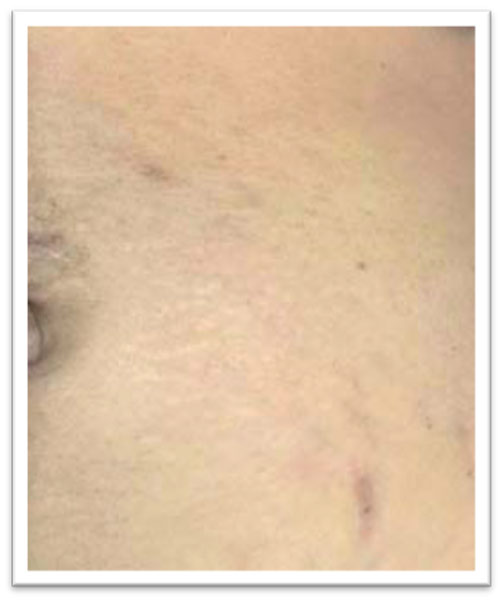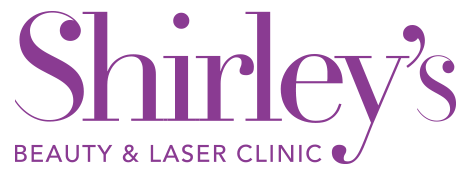Acne Scars and Stretch Marks Treatment
When we have an accident or minor injury, our bodies work to repair the damage as quickly as possible. This means it focuses on a quick repair, a scar, rather than a neat one. Stretchmarks may be the result of pregnancy, or a sudden change of weight or shape, but the elastin fibres in the dermis break rather than stretch, and areas of deeper skin show through. Acne scars are the result of the body’s response to severe acne, when our defence mechanism releases powerful enzymes, that work not only on the bacteria, but also damage the surrounding tissue.
How does the treatment work?
Selective Waveband Technology (SWT®) treatment alone can produce a significant improvement in scar tissue, particularly in the case of surgical or trauma scars. It does this by creating a vascular response in the blood vessels around the scar, which in turn leads to collagen replacement. Frax 1550nm laser treatment works by creating very small, very controlled islands of heat damage, surrounded by healthy normal skin. When the body repairs this controlled damage, collagen in the whole of the treated area is replaced, but more neatly than it was before. Research has shown that a combination treatment using narrowband light followed by the Frax 1550 produces an improved result with minimal treatments.
Which problems can be treated?
Frax 1550 treatments can be used on most types of scars and on stretchmarks. The best results will be found on scars or stretchmarks that are quite recent, rather than very old pale ones. Keloid scars (where the new scar tissue extends beyond the original injury) normally require pre-treatment with steroid injections – your doctor will be able to advise on this. The treatment has preprogrammed settings for different skin types that deliver the correct energy output for your complexion.
How long does a treatment take?
Frax 1550 treatment normally involves the use of a local numbing cream, which is applied 30-40 minutes before treatment. Typically, the treatment procedure itself takes from 15-45 minutes, depending on the size of the area to be treated.
Do I need to take special precautions before and after treatment?
It is important to avoid tanning and self-tanning products before and during the treatment period. It is possible to treat tanned skin, but reduce sun-exposure prior to treatment, otherwise the treatment will be less effective and less comfortable. You will get maximum results if you use a normal moisturising cream before and after treatment. Talk to your doctor if you are prone to acne outbreaks or cold sores. After treatment, you should avoid sun exposure for 30 days, or use sun protection (minimum SPF 30) if sun exposure cannot be avoided.
How many treatments do I need?
Typically, you will be offered a course of four treatments, but if you are darker-skinned, your doctor may decide to offer a longer course of gentler treatments.
Does the treatment hurt?
Treatment may be a little uncomfortable, which is why we recommend the use of a numbing creme. After this wears off you will have a few hours where the skin as if you have a light sunburn.
Before and After
